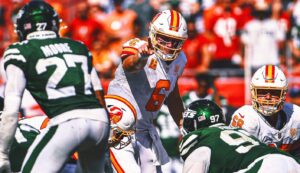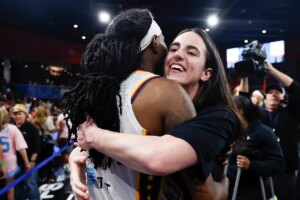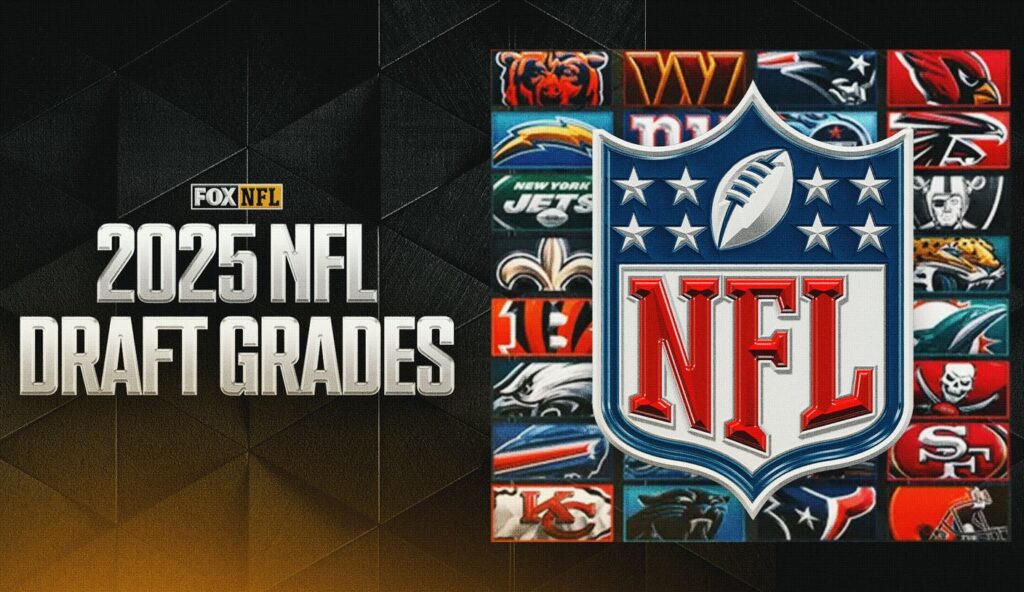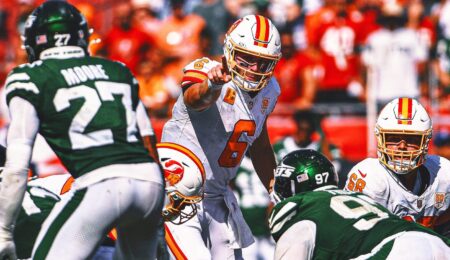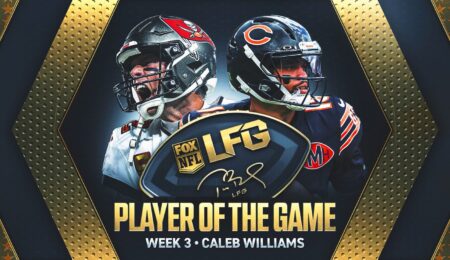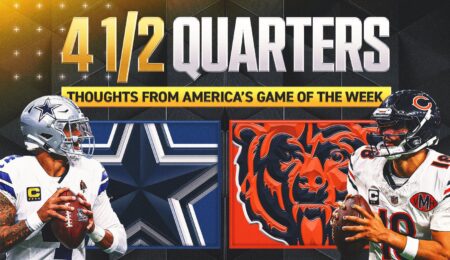Rob Rang
NFL Draft Analyst
Grading a draft immediately after it concludes is akin to giving your compliments to the chef before the meal has been served. Sure, the food might sound good (or bad) based on the ingredients listed on the menu, but the true evaluation won’t come until after the product has been tested.
It will take at least three years before we can truly assess how the 32 NFL teams fared over the weekend. But what is readily apparent is the different approaches that were taken, from going for the best available talent to focusing on team needs to gambling on long-term potential, sometimes amid character concerns.
Teams are listed alphabetically.
Adding splashy defensive tackle Walter Nolen in the first round was an ideal final touch to a masterful offseason dedicated to improving Arizona’s front. Nolen has some boom or bust to him, but the talent is undeniable and Jonathan Gannon’s proven ability to develop defenders makes him an intriguing investment.
If healthy, cornerback Will Johnson offers top-10 talent at a discount price as the No. 47 overall pick. Jordan Burch is an intriguing talent who could pop in Gannon’s scheme, as well. While I’m excited for all the improvements made to Arizona’s defense in this draft, I question if enough was done to upgrade the offensive line, tempering my enthusiasm for this group, overall.
Grade: B-
There is something to be said for approaching a draft with clear-cut goals and addressing those needs. Similar to the Cardinals one spot earlier, it had to be refreshing for defensive-minded head coach Raheem Morris to so thoroughly address a sagging Atlanta pass rush, investing not one but two first-round picks in twitchy sack stars Jalon Walker and James Pearce Jr. I love Walker’s versatility and alpha-dog mentality, and Pearce might just be the bendiest rusher of this class (though he doesn’t chip in much against the run).
Each offers immediate impact potential, as does the Falcons’ new safety tandem of Xavier Watts and Billy Bowman Jr. in the middle rounds. Both are natural ballhawks capable of taking advantage of the green quarterbacks of the NFC South. The Falcons only had five picks to play with, and their double-dipping strategy leaves almost zero room for error.
Grade: C+
In the days leading up to the draft, Ravens GM Eric DeCosta spoke about his anticipation of adding a cornerback and safety. Who knew at that time that he meant it happening with one player in the opening round? That’s the positional versatility Malaki Starks should offer Baltimore, giving the club a plug-and-play option at strong safety alongside star Kyle Hamilton and added flexibility at the nickel and dime corner spots.
The culture established by DeCosta and head coach John Harbaugh seemingly made them comfortable drafting CFB sack leader Mike Green at No. 59 overall despite disturbing off-field allegations. But like Starks, he winds up in an ideal landing spot. Middle-rounders Emery Jones Jr. and Carson Vinson starred at tackle in college but could be best suited inside for the Ravens. Of their staggering eight selections on Day 3, I’m highest on them and speedy cornerbacks Bilhal Kone and Robert Longerbeam.
It is difficult to improve a team as talented as Baltimore with rookies, but this draft class is loaded with both quality and quantity.
Grade: A-
Sometimes, it isn’t just the positional fit that warrants a high grade but the specific prospect chosen. I love Buffalo’s bet on the speed and playmaking of cornerback Maxwell Hairston, as the Bills needed more game-breaking ability on the defensive side of the ball. GM Brandon Beane could have stuck to the “same old” Bills formula of drafting good, physical players, but Hairston is a gamble that could be the finishing touch needed for a Super Bowl run. Following the early investment made in Hairston — the fastest player at the Combine this year — the Bills returned to the “black-and-blue” strategies of prior drafts, dedicating their first five picks on defenders, including a trio of former SEC tough guys on the defensive line in T.J. Sanders, Landon Jackson and Deone Walker.
The blue-collar mentality remained a focal point deep into Day 3, even as the Bills went to tight end and cornerback with Jackson Hawes and Dorian Strong, each of whom will be adding some grit and physicality to their respective position rooms in Buffalo.
Grade: A
Clearly, Carolina needed to get Bryce Young help at receiver, and Tetairoa McMillan possesses the size, ball skills and production to suggest he can be that. I’m eager to see if “T-Mac” emerges as the clear-cut WR1 expected of a top-10 selection, as I wasn’t as high on him as many others in the media. However, I’m significantly higher on Nic Scourton than many draft analysts seem to be, and love the pro-readiness and value he offers as the 51st overall selection. Princely Umanmielen might play the same position, but he’s an entirely different style of outside linebacker than Scourton, winning with speed and agility. Of Carolina’s Day 3 selections, I’m most excited about their early picks of running back Trevor Etienne and safety Lathan Ransom, who possess not only juice but the toughness necessary to be longtime contributors.
Grade: B-
Given the way that Sam LaPorta helped the Detroit Lions the past two seasons, few know better than new Bears head coach Ben Johnson the immediate impact a playmaking tight end can make. While I was slightly surprised to see Colston Loveland drafted ahead of Tyler Warren, the former is actually a better schematic fit for the Bears given that the club already boasts a quality dual-purpose tight end in Cole Kmet, allowing Loveland to play more of the “big receiver” role.
I liked the Bears’ selection on Thursday, but I loved their picks on Friday. Wide receiver is not a position I expected them to focus on early, but Luther Burden III is the best receiver after the catch in this draft and will make their offense (and special teams) instantly more explosive. Similarly, I like the pro-readiness and nastiness that fellow second-rounders Ozzy Trapilo and Shemar Turner provide. Of the Bears’ Day 3 picks, I’m most intrigued by the upside of UTSA cornerback Zah Frazier, who offers many of the traits that have helped Tariq Woolen — another former fifth-round pick — emerge as a starter for the Seahawks.
Grade: A-
Year in and year out, the Bengals gamble on traits, and that was again the case in 2025 with the selection of Shemar Stewart, a virtual lottery ticket of an athlete and exactly the kind of insurance policy needed with Trey Hendrickson a possible trade candidate. Insurance, in fact, seemed to be the strategy for Cincinnati in this draft, with second- and fourth-round selections used on inside linebackers Demetrius Knight Jr. and Barrett Carter, signaling that popular veterans Germaine Pratt and Logan Wilson might also be on the way out.
While much of the focus will understandably lie with the Bengals’ defensive prospects, I like the talent and value of blockers Dylan Fairchild and Jalen Rivers, as well as running back Tahj Brooks, a Sherman tank of a runner with excellent balance through contact.
Grade: B
The Browns are either the smartest team in the NFL or, more likely, a ship without a rudder. Early and late, their choices were confounding. First off, while Cleveland got a very good player in Mason Graham at No. 5 overall and convinced the Jaguars to give up their 2026 first-round selection to move up just three spots, I don’t like trading away the opportunity to land a true blue-chip talent like Travis Hunter or Abdul Carter.
Now, to be fair, Graham is as safe as this class gets, and he certainly adds beef and tenacity to a defensive line boasting arguably the league’s most dynamic defensive end in Myles Garrett. However, he isn’t the “special” talent normally associated with a top-five selection. While similarly safe, Carson Schwesinger at No. 33 overall was also a case of paying a premium price for a good (but not great) player at a position that wasn’t of dire need.
And then, of course, was the double-dipping at quarterback (and running back). Obviously, if either Dillon Gabriel or Shedeur Sanders wind up being Cleveland’s long-term solution at quarterback, then GM Andrew Berry and Kevin Stefanski deserve praise. But is Cleveland’s plan to keep five quarterbacks on the roster? Neither Gabriel nor Sanders appear likely to be realistic options to start in the season opener, and the Browns brought in Joe Flacco and Kenny Pickett in the offseason with Deshaun Watson still on the books.
In a vacuum, I like the prospects brought in by Cleveland, including both runners Quinshon Judkins and Dylan Sampson, as well as tight end Harold Fannin Jr. I’m just not convinced that this seven-man class will help the Browns win more games in 2025.
Grade: C-
Give Jerry Jones and the Cowboys some credit. For a franchise that once prioritized playmakers — sometimes irresponsibly — Dallas chose to begin its draft with the biggest, nastiest blocker of this class in Tyler Booker, wisely providing the girth and guts needed to combat the dominant defensive lines of the NFC East. Further, Day 2 picks Donovan Ezeiruaku and Shavon Revel Jr. were quality value selections who filled positions that had been decimated in recent years by free-agent defections and injuries.
While I liked the Cowboys’ strategy to reinforce their offensive line and defense, they were surprisingly quiet on the playmaker front. Fifth-round running back Jaydon Blue certainly adds the element of straight-line speed, but I believe Dallas really needed to upgrade its receiving corps beyond CeeDee Lamb.
Grade: B-
Given that I projected the Broncos to select a running back at No. 20 in virtually every mock draft I wrote this offseason, I can’t say that I foresaw their pick of Texas cornerback Jahdae Barron. That admission aside, I love the addition. It takes a special breed of confidence to play opposite a superstar like Patrick Surtain Jr., and Barron has that — a critical element given the passing attacks of the AFC West.
Like Barron, running back RJ Harvey offers a résumé few can touch, though he came off the board earlier than I expected. I felt the same about former Illinois wide receiver Pat Bryant, though both play with the instincts and physicality well-suited for Sean Payton’s scheme, as does LSU power edge rusher Sai’vion Jones, a player whose best football still lies ahead of him.
Grade: C+
I was fascinated to see how GM Brad Holmes and the Lions would approach this draft given all their coaching departures in the offseason. Tyleik Williams could audition as a stunt double for injured standout defensive tackle Alim McNeill, offering similar size, power, agility and leadership skills.
Meanwhile, the Lions might have found a clone of their head coach Dan Campbell in second-round guard Tate Ratledge, one of the more imposing and intense players of this class. Between Ratledge and fifth-round pick Miles Frazier, the Lions’ lineage up front is secure. In terms of value, I liked the sixth-round selection of defensive end Ahmed Hassanein more than the third-round pick of wideout Isaac TeSlaa, though the latter’s intriguing size/speed combination is a welcome complement to the shiftiness and speed of Detroit’s current receiving corps. Finally, don’t be surprised if seventh-round pick Dan Jackson makes this club.
Grade: B-
The first round could not have played out much better for the hosting Green Bay Packers, who capitalized on the speediest wide receiver in the class — Matthew Golden — falling into their queso. Specifically, it provides them with the home-run hitter needed to take quarterback Jordan Love and this offense into another stratosphere.
The Packers added a much bigger and even more versatile pass-catcher in Savion Williams in the third round. Speaking of size, the Packers got plenty of that in North Carolina State offensive lineman Anthony Belton in the second, power edge Barryn Sorrell in the fourth and defensive tackle Warren Brinson in the sixth, boosting the bulk and versatility on both sides of the line of scrimmage for Green Bay.
Grade: B
Sure, it was frustrating for Texans fans to watch the first day of the draft come and go without a pick being made, but GM Nick Caserio’s patience will be rewarded next year with Houston now owning two first-round selections in a class expected to be much richer than this one. And let’s be real — that 2026 New York Giants pick could be a high one.
Even better, Caserio put together an intriguing class this year, filling the need for an athletic tackle with the Big Ten’s blocker of the year in Aireontae Ersery and adding former Iowa State teammates Jayden Higgins and Jaylin Noel in the second and third rounds, respectively. Polar opposites in style, the duo offer size, speed and reliable hands, greatly improving Houston’s depth at receiver. The Texans added another duo of college teammates in cornerback Jaylin Smith and Woody Marks (both from USC), with the latter arguably the best receiving back of this class.
Grade: B+
Whether it’s Anthony Richardson or Daniel Jones (or rookie Riley Leonard, for that matter) operating at quarterback for the Colts in 2025, this is a club built around their stable of runners, featuring, of course, star running back Jonathan Taylor. With opponents understandably crowing the line of scrimmage to slow the Colts’ running game, adding a playmaking tight end was crucial.
I love how the first round played out for GM Chris Ballard, as Tyler Warren should excel in this role and prove that the Colts stole him at No. 14. I feel that powerful edge rusher JT Tuimoloau (45th overall) and shifty running back DJ Giddens (151st) will also ultimately outperform their draft slots. I was, however, surprised that the Colts didn’t add more bodies up front for the offensive line, given the significant free-agent defections.
Grade: C+
Look, I’m as high on Travis Hunter as anyone. I’ve long been referring to him as the top prospect in this class and a generational talent since his first game at Colorado. And I love the pairing of Hunter with Brian Thomas Jr. and, of course, both Liam Coen and Trevor Lawrence. But Hunter had damn well better be prepared to play two positions full time to justify Jacksonville’s borderline reckless trade of its 2026 first-round selection to move up three spots to get him. Anything less than immediate superstardom for Hunter and the Jags will look foolish.
The long wait to pick again — Jacksonville went 86 selections before being back on the clock — only reinforces how important the Jaguars made him to their class. I like the addition of gritty corner Caleb Ransaw and dependable blocker Wyatt Milum in the third round, as well as the big-play potential offered by Day 3 running backs Bhayshul Tuten and LeQuint Allen.
Grade: B-
Andy Reid gets a lot of credit for the Chiefs’ success on game day and justifiably so. But GM Brett Veach delivered a master class on patience and value in the first round, as well, coaxing the Philadelphia Eagles out of a fifth-round pick (which KC ultimately traded to Pittsburgh) to drop a single spot and select Ohio State’s Josh Simmons, a talent worthy of a top-15 pick when healthy and filling a huge need at tackle.
I was surprised that Kansas City didn’t invest more picks on the offensive line the rest of the way, but I love the talent added. Omarr Norman-Lott is a penetrating defensive tackle who can provide immediate juice to the Chiefs’ defensive line, with the underrated Ashton Gillotte potentially doing the same on the outside. Middle-rounders Nohl Williams, Jalen Royals and Jeffrey Bassa were some of my favorite “second-tier” prospects at their respective positions in this class.
The advanced degree of difficulty in drafting for a team that has relatively few holes cannot be overstated. Veach and the Chiefs handled it masterfully, turning in one of the best classes of this year’s draft — slipping only slightly because I thought they needed more help along the offensive line.
Grade: A-
No team has undergone more of a transformation on offense over the offseason than the Raiders, whose selection of Ashton Jeanty (and earlier trade for Geno Smith) vaporized whatever memories fans might have of last year’s offense. A true bell cow, Jeanty is a future NFL superstar, and he’s going to a head coach in Pete Carroll who won’t hesitate to feature him as such.
Jeanty deserves praise, but so does the rest of the Raiders’ incoming class. I especially loved the Raiders’ Day 2 picks. Wideout Jack Bech is going to quickly emerge as one of Smith’s favorite targets. Darien Porter was born to play cornerback for Carroll, with the former wideout-turned-defender taking the same path to the NFL as Richard Sherman and Tariq Woolen. The Raiders also nabbed two of the more underrated blockers in this class, in the durable and dependable Caleb Rogers and Charles Grant. The back-to-back selections of small-school quarterbacks Tommy Mellott and Cam Miller probably raised plenty of eyebrows, but the former is an elite athlete whose future could be at receiver. The Raiders needed a renaissance … and this draft is the perfect capper to an offseason that delivered it.
Grade: A
Similar to their aforementioned AFC West rivals, there is something refreshing about the way that Jim Harbaugh has transformed the Chargers from a once-finesse style of offense into one seeking to punish opponents. Omarion Hampton’s name might appear as a picture next to the term “workhorse” in online dictionaries next fall. Additionally, speedy big-play pass-catchers Tre Harris, KeAndre Lambert-Smith and Oronde Gadsden II give the Chargers the necessary vertical threats to take advantage of defenses creeping up toward the line of scrimmage.
While the Chargers’ splashy skill-position additions will generate much of the buzz, I also like the addition of tough guys Jamaree Caldwell and Kyle Kennard in the middle rounds.
Grade: B
Rams GM Les Snead once famously exclaimed “f— those picks,” and his actions Thursday reflected that mindset, swapping out of the first round of this year’s class to give his club two selections in the opening frame next year. And make no mistake, that pick from the Atlanta Falcons could be a good one.
Frankly, the Rams might need it, as I thought their draft class this year was rife with reaches. Tight end Terrance Ferguson is a good player, but I was shocked to see him come off the board at No. 46 overall, and I feel similarly about running back Jarquez Hunter roughly two rounds later. I do like the physicality of edge rusher Josiah Stewart and the dependability of defensive tackle Ty Hamilton. Chris Paul Jr. was viewed as too small to be an effective inside linebacker in the NFL — but the same was once said about Ernest Jones IV.
Snead and head coach Sean McVay have surprised me many times before, consistently turning poorly-reviewed draft classes into divisional winners. I’m eager to see if they can do it again, with the extra 2026 first-round pick boosting the grade.
Grade: C
I can appreciate the rationale behind GM Chris Grier’s decision to select massive nose guard Kenneth Grant at No. 13 overall. When the Dolphins’ offense is healthy and humming, opponents have little choice but to try to run the ball to slow them down — and Grant is perfectly suited to clog up those lanes. That said, I believe the Dolphins paid an awful lot in draft capital for a player who simply hasn’t dominated consistently — and the Dolphins spent two more picks on Day 3 on the position (on Jordan Phillips and Zeek Biggers), as well.
My favorite picks for Miami in this draft were the burly blocker Jonah Savaiinaea in the second round and the late selections of running back Ollie Gordon (179th) and quarterback Quinn Ewers (231st), each of whom are intriguing fits in Mike McDaniel’s offense.
Grade: D+
Given the highly aggressive moves GM Kwesi Adofo-Mensah made in free agency, the Minnesota’s decision to stand pat and select Ohio State blocker Donovan Jackson is roughly the equivalent of walking past a litany of your favorite restaurants, only to go home and make yourself a peanut butter and jelly sandwich. That said, I like Jackson … a lot. I won’t quibble too much with a playoff-caliber team investing in the blockers necessary to protect young quarterback JJ McCarthy.
However, with the Vikings’ next pick coming at receiver (Tai Felton) — obviously a relative strength of their roster — I thought they made some odd selections in this draft. Things got a little more logical in the later rounds, with the addition of flashy defensive tackle Tyrion Ingram-Dawkins, hard-hitting run-stuffer Kobe King at inside linebacker and steady, all-purpose tight end Gavin Bartholomew.
Grade: C
General manager Eliot Wolf worked the 2025 NFL draft like he was at the grocery store, adding a total of 11 prospects to the cart and from just about every aisle. The selection of left tackle Will Campbell at No. 4 overall isn’t the most exciting of draft day picks, but it was a good one, as he’s a proven and polished blocker who fits in with the blue-collar mentality Mike Vrabel is seeking to rebuild in Foxborough, as well as the backside protector Drake Maye needs to take the next step.
In the middle rounds, the Patriots made similar moves with the splashiest pure center of this class in Jared Wilson, as well as run-stuffing DT Joshua Farmer and twitchy edge rusher Bradyn Swinson. In between, New England boosted its skill position talent, nabbing one of this year’s most dependable all-around running backs in TreVeyon Henderson, as well as the cat-quick Kyle Williams, giving Maye legitimate playmakers. I’m not convinced that the Patriots added many true superstars this year, but this was the foundational class the franchise needed to re-establish the roster.
Grade: A-
Over the past five years, no team has invested more early picks on offensive linemen than the Saints, with No. 9 pick Kelvin Banks Jr. now joining Taliese Fuaga (No. 14 overall, 2024), Trevor Penning (No. 19, 2022) and Cesar Ruiz (No. 24, 2020). Banks offers the club lots of flexibility at tackle — the Saints recently declined their fifth-year option on Penning — while being viewed by some as a natural fit inside at left guard. It will be interesting to see who Banks is protecting at quarterback, after the Saints invested the No. 40 overall selection on Tyler Shough, who is as gifted a passer as there is in this class. His advanced age and durability concerns made him a polarizing prospect, but I like the gamble and trust both GM Mickey Loomis and new head coach Kellen Moore’s eye for talent.
I thought the Saints did a nice job of adding quality players in the middle rounds. I’m especially high on their fourth-round selections of linebacker Danny Stutsman and cornerback Quincy Riley, who led all DBs in this class with 15 interceptions at the college level.
Grade: B
The Giants have yet to announce their decision on Kayvon Thibodeaux’s fifth-year option, but drafting speed rusher Abdul Carter at No. 3 overall is a statement in itself. The two couldn’t be much different. Thibodeaux is more of a power player, whereas Carter is greased lightning off the edge; each should excel on a defensive front that already boasts two established stars in Dexter Lawrence and Brian Burns. While Carter offers an immediate impact — I think he should be the early favorite for Defensive Rookie of the Year honors — give GM Joe Schoen credit for playing the long game, as well, by aggressively trading back into the first round to nab Ole Miss quarterback Jaxson Dart. The talented young signal-caller should get the time needed on the sideline to watch and learn effectively with veterans Russell Wilson and Jameis Winston already on the roster.
Normally, middle-round picks are the ones requiring patience, but that may not be the case with their haul. Darius Alexander is among the more pro-ready defensive tackles in this class, with a veteran carpenter’s tool belt of pass-rush moves. The same could be said for the runaway freight train that is running back Cam Skattebo — a seemingly perfect “Thunder” to the “Lightning” combination of speedier Tyrone Tracy Jr. and Devin Singletary. I also thought offensive tackle Marcus Mbow was a steal in the fifth round.
Grade: A-
Aaron Glenn saw firsthand with the Detroit Lions what a dominant offensive line can do for a club, and the first-round selection of Armand Membou reflects a desire for physicality over flash. Membou’s seek-and-destroy playing style as a run-blocker is a nice complement to a running game centered around Justin Fields and Breece Hall. Speaking of Fields, he leaned heavily on playmaking tight ends in his previous NFL stops, and the Jets landed arguably the most sure-handed big pass-catcher of this class with Mason Taylor.
Glenn, a former cornerback himself, knows better than most that 40-yard dash times can be overrated and that the highly physical and instinctive Azareye’h Thomas plays faster than he timed. He’ll prove a steal at No. 73 overall. Of the Jets’ Day 3 picks, I liked the awareness and physicality of safety Malachi Moore and Francisco Mauigoa most.
Grade: B-
In a case of the rich getting richer, Howie Roseman nabbed the draft’s most exciting off-ball linebacker in Jihaad Campbell at No. 31 overall, boldly moving up one pick to assure his addition. It was a move that made a lot of sense, as opponents will have little choice but to get the ball out quickly to running backs and tight ends in trying to avoid the Eagles’ vaunted pass rush, and Campbell offers extraordinary agility in coverage. Roseman returned to the position later in the draft with yet another Georgia standout in Smael Mondon Jr., another fast and physical linebacker who flashes future starting ability.
In between, the Eagles landed a natural cover safety in Andrew Mukuba and two of the more underrated and pro-ready interior linemen of this class, defender Ty Robinson and NFL legacy Drew Kendall at center. These weren’t positions of need for the defending Super Bowl champions, but they only make the roster younger, hungrier and cheaper.
That “always compete” mentality also made quarterback Kyle McCord an intriguing selection in the sixth round. No one is suggesting that he is going to push Super Bowl MVP Jalen Hurts, but he might challenge Tanner McKee and Dorian Thompson-Robinson. McCord flashes starter-caliber accuracy, serving as a late-round investment policy for a team that seemingly has it all.
Grade: A-
Few teams prioritize size and toughness along the line of scrimmage like the Steelers, and first-round pick Derrick Harmon exudes both of those qualities. This wasn’t the flashiest of selections — the Steelers rarely have those — but I love this pick for Pittsburgh and won’t be surprised at all when Harmon winds up being a decade-long anchor. Similar picks were made in the middle rounds with stubby but savvy edge rusher Jack Sawyer and nose guard Yahya Black. Third-round addition Kaleb Johnson runs with the determination, contact balance and game-speed that might remind Steelers fans of James Conner. All four were seemingly born to be Pittsburgh Steelers.
I also like the late-round selections of quarterback Will Howard and linebacker Carson Bruener, a special teams ace and the son of former Steelers’ tight end and current West Coast scout Mark Bruener. If the Steelers were convinced that Howard was a realistic option to start the season opener at quarterback, GM Omar Khan would not have waited until the sixth round to draft him, but he does offer starter-like intangibles.
Grade: B
Pardon the pun, but the 49ers went mining for gold in the 2025 NFL draft and might strike it rich or strike out with this class, making it a fascinating one.
Neither Kyle Shanahan nor John Lynch were employed by the 49ers when the club boasted one of the NFL’s better, more rugged defensive ends in Justin Smith, but that is the kind of player Mykel Williams can be with a little more polish (and health). Similarly, massive defensive tackle Alfred Collins could turn into a monster, but he flashed more than finished while working his way through the depth chart at Texas over his college career. I see similar boom-or-bust potential with linebacker Nick Martin and twitchy but undersized cornerback Upton Stout, each of whom also struggled with injuries in college and, frankly, I thought were both reaches in the third round. If gambling on a player coming off of injury, I think it is wiser to do it late, as the 49ers did with quarterback Kurtis Rourke, who, when healthy, proved a legitimate weapon as both a passer and runner at both Ohio and Indiana.
The one player I absolutely love for the 49ers is running back Jordan James, an instinctive back with terrific vision, lateral burst and contact balance. Like his father, Kyle Shanahan seemingly has a magic wand with running backs, and James will prove it once he gets his opportunity.
Grade: C+
Football can be a complicated game, but sometimes the simplest solution is the right one. That was the approach the Seahawks took in the first round, nabbing their perfect schematic fit in Grey Zabel, the most versatile blocker in this class and a plug-and-play option at left guard.
This was the earliest the Seahawks have drafted an interior offensive lineman since Hall of Famer Steve Hutchinson, and I’m not sure GM John Schneider enjoyed using his first-round pick on an interior blocker. But once he forced down those vegetables in the first round, the rest of the draft was dessert, and the Seahawks feasted as well as any team in the league, landing three other prospects in safety Nick Emmanwori, tight end Elijah Arroyo and quarterback Jalen Milroe, each of whom flashed first-round traits.
Milroe, of course, won’t be expected to play right away, with the Seahawks signing Sam Darnold in free agency. He does offer intriguing running ability, however, for an offensive coordinator (Klint Kubiak) who values a mobile quarterback, and a head coach (Mike Macdonald) who joined Seattle following time in Baltimore with Lamar Jackson.
The Seahawks aren’t likely to get the same production out of late-round receivers Tory Horton and Ricky White III as longtime stars DK Metcalf and Tyler Lockett, but each does offer legitimate big-play potential as well as special teams prowess.
The Seahawks needed a splashy draft and got one. In terms of both quantity and quality, their 2025 class was as good as any in the league.
Grade: A
Double-dipping was the clear strategy for the Bucs in 2025 with two picks apiece dedicated to receiver, cornerback and edge rusher. The smartest teams draft for the future, anticipating rather than reacting, and that is precisely the strategy GM Jason Licht and the Bucs took in nabbing Emeka Egbuka at No. 19 overall, even with the seemingly ageless Mike Evans and Chris Godwin set to return this year. Egbuka was the second receiver off the board, but I think he’s a safer pick than the first one — Tetairoa McMillan (to the NFC South division rival Carolina Panthers) — and a pass-catcher that will keep Baker Mayfield happily firing away. Seventh-round big-play magnet Tez Johnson has the quickness to surprise, as well.
Benjamin Morrison and Jacob Parrish might very well prove Day 2 steals in the secondary, and I’m a fan of both of their new edge rushers, David Walker and Elijah Roberts — each of the prospects complement their respective running mates with different, unique skill sets.
But in a class loaded with talented big men along the line of scrimmage and running backs, Tampa Bay’s completely ignoring such spots was surprising.
Grade: B-
Cam Ward wasn’t my favorite prospect in this class (he ranked 14th on my final Big Board), but there is no denying his talent, improvement or, frankly, Tennessee’s “titanic” need for improved play at quarterback. Ward is a natural playmaker who brings immediate excitement to the franchise. I just wish GM Mike Borgonzi had found more established pass-catchers to aid his adjustment to the NFL.
The Titans did invest multiple 2025 picks on pass-catchers — adding speedster Chimere Dike, soft-handed tight end Gunnar Helm and red-zone specialist Elic Ayomanor — to a roster that already has former first-round picks in Calvin Ridley and Treylon Burks. If Ward continues his ascent, this might be enough. Of the three rookies, I’m highest on Ayomanor (picked No. 136 overall), who wins with body control and strong hands to steal passes above the rim.
I do like the potential of the two defenders selected before the pass-catchers. Edge rusher Oluwafemi Oladejo and safety Kevin Winston Jr. show the kinds of flashes on tape that suggest each could ultimately prove among the very best at their respective positions from this class.
And that is the theme of this Titans draft haul. It is heavy on potential but thin on sure things.
Grade: B
A quarter of the prospects drafted in the first round of the 2025 NFL draft play along the offensive line, and the Commanders got arguably the most athletic of the bunch in Josh Conerly Jr. The No. 29 overall pick starred at left tackle for Oregon, but is likely to move to right tackle for the Commanders, providing an athletic upgrade over free-agent addition Andrew Wylie and the mobility necessary to assist the mesmerizing playmaker that is second-year star quarterback Jayden Daniels. Though wideout wasn’t necessarily a position of concern for the Commanders, I really liked the addition of speedster Jaylin Lane in the fourth round. He’ll help in the vertical game and as a returner.
Given where he was selected, my favorite pick for the Commanders was cornerback Trey Amos (No. 61 overall), who’s among the better press corners in this class. With only five draft picks, GM Adam Peters didn’t have as many opportunities as most, but few did more with less.
Grade: B
Rob Rang is an NFL Draft analyst for FOX Sports. He has been covering the NFL Draft for more than 20 years, with work at FOX, Sports Illustrated, CBSSports.com, USA Today, Yahoo, NFL.com and NFLDraftScout.com, among others. He also works as a scout with the BC Lions of the Canadian Football League. Follow him on X @RobRang.
Want great stories delivered right to your inbox? Create or log in to your FOX Sports account, follow leagues, teams and players to receive a personalized newsletter daily.
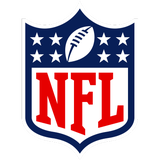
Get more from National Football League Follow your favorites to get information about games, news and more
Read the full article here

